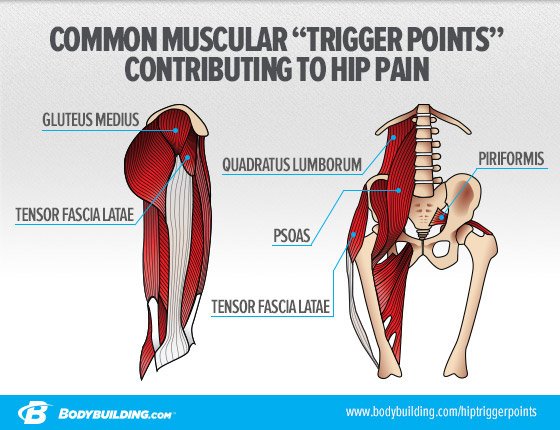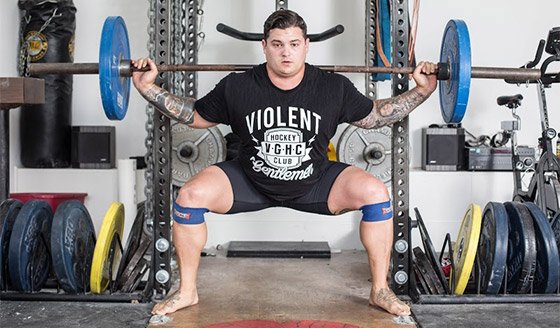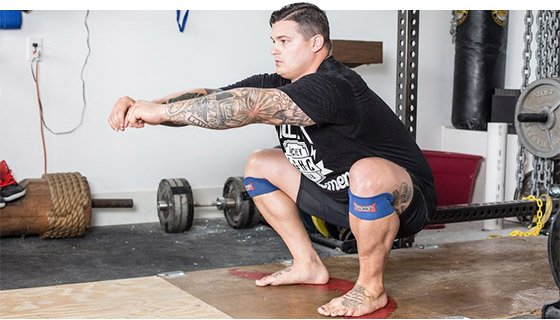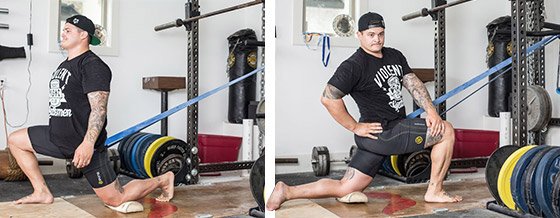Our bodies are designed to do some amazing things. However, all the running, jumping, lifting, throwing, and playing we're built for can't stand up to the hours we all spend sitting down. This is a necessary evil, of course. We have jobs. We don't hunt for our food every day. Which is great because, honestly, I like my computer and air-conditioned house.
But because our jobs are less and less physically demanding, we need to make sure we are mobile where it counts. For athletes—and strength athletes in particular—where it counts is the hips. Your ability to move with strength and authority is determined by the amount of power and force you can generate, and that power comes from your hips.
Unfortunately, the hips are also the biggest area I have trouble with, and where I see other people being tight. They can't get low enough for decent squats. If they do, they have to sacrifice good position and can't generate force once they're there. This is painfully—often literally so—obvious as soon as someone attempts a simple bodyweight squat. Like Shakira says, the hips don't lie.
I put this article together as a guide for getting your hips back. You need them in order to do your best work in the gym, and the first step is changing the way you warm up.
MAKE HIP MOBILITY PART OF YOUR DAY
I do this series of rolling, stretching, digging, and holds in addition to my normal warm-up. Do this before your normal training seven days a week for five weeks. That's a lot of volume, but if you stick with it for that long it'll make a huge difference.
Don't force it or push too hard in any of these drills. Contract the muscles you are targeting, then exhale and relax to let them lengthen. I started using this technique in college for stretching, and it quickly gives you more range of motion.

Also, focus on exhaling and breathing deeply, like in yoga. Those yoga folks are crazy bendy, so I'll listen to what they have to say.
Step 1 Lacrosse Ball Digging
This is pretty intense. Simply position the ball in a trigger point and let it dig in. You can move a bit and help it manipulate the muscle around it, but stay focused on pressure rather than dynamic movement. Put it in the spot, contract the muscle, and relax a couple times.

GoFit Professional Foam Roller
Supports Regeneration Of Muscle Tissue By Providing Deep Tissue Massage!
Step 2 Foam Rolling
You have many options with this tool. There are many different rollers on the market, and no matter what anyone tells you, they're all more or less fine.
Position your body weight on the muscle and roll over it a few times, then switch to the next one. It's pretty simple.
The IT band, quad muscles, and glute muscles should all get a turn.
Step 3 Paused Squats
Keep these light. I never go over 135 pounds, even though I can squat well over 600 pounds. Use just enough resistance and weight to force you down to the bottom. When you get to the bottom, hold for a two-count, and then come up.
Try and get a little deeper every rep. A couple sets of five reps are all you need if you do this every day like you should. Aim for three sets—one set at close stance, one set at medium stance, and one at wide stance.

Step 4 Band-Assisted Deep Squats
Some big-time powerlifters swear by these, and with good reason: Band-assisted deep squats work. But they're also pretty damned uncomfortable, at least at first.
To perform a band-assisted squat, attach a band to something in front of you that won't move. Step into it—no shoes allowed!—and pull it up just under your butt. Sit down and let it take some of the weight off your knees. Try this with a close stance, then with a wide stance.
For this to work its magic, don't think of the squat as a squat; think of it like you're sitting in your bottom position, trying to get everything to relax. Keep your feet forward and drive your knees out toward your little toes. Work on shifting back and forth to find your painful spots and work through them. Don't worry, you'll find them.

Deep Squats
Aim for one minute per day to start, and build it up to five minutes. You don't have to do it all in one rep. Total time at the bottom is what you're shooting for. Work on keeping your chest up and maintaining the arch in your back.
Step 5 Band-Assisted Hip Flexor Stretch
A band-assisted lunge will help pull on the femur in the hip socket and get it moving. Put one leg into the band and pull it as high on the leg as you can. Try to place it just under your butt if you're assisting from the front, or across your hip on the front to assist from the back.

Band-Assisted Hip Flexor Stretch
A lot of people only do the assist from the front; I do it both ways, usually for about 1-2 minutes apiece. Step away from it and do the stretch, letting the band pull. Work though this with some shifting, trying to find where you need work.
WHAT'S THE GOAL?
The goal of all this mobility work is simple enough: to get to where you can sit in the bottom of a squat position comfortably. It'll take time, discomfort, and some sore-ass mornings to get there, but think of it this way: We were born able to do this as babies, but we slowly worked our way out of that position. Now it's time to slowly work back in.
This isn't the answer for everything that gets in the way of your weight training, but it's a major step in the right direction toward treating yourself like an athlete. Give it a chance!


